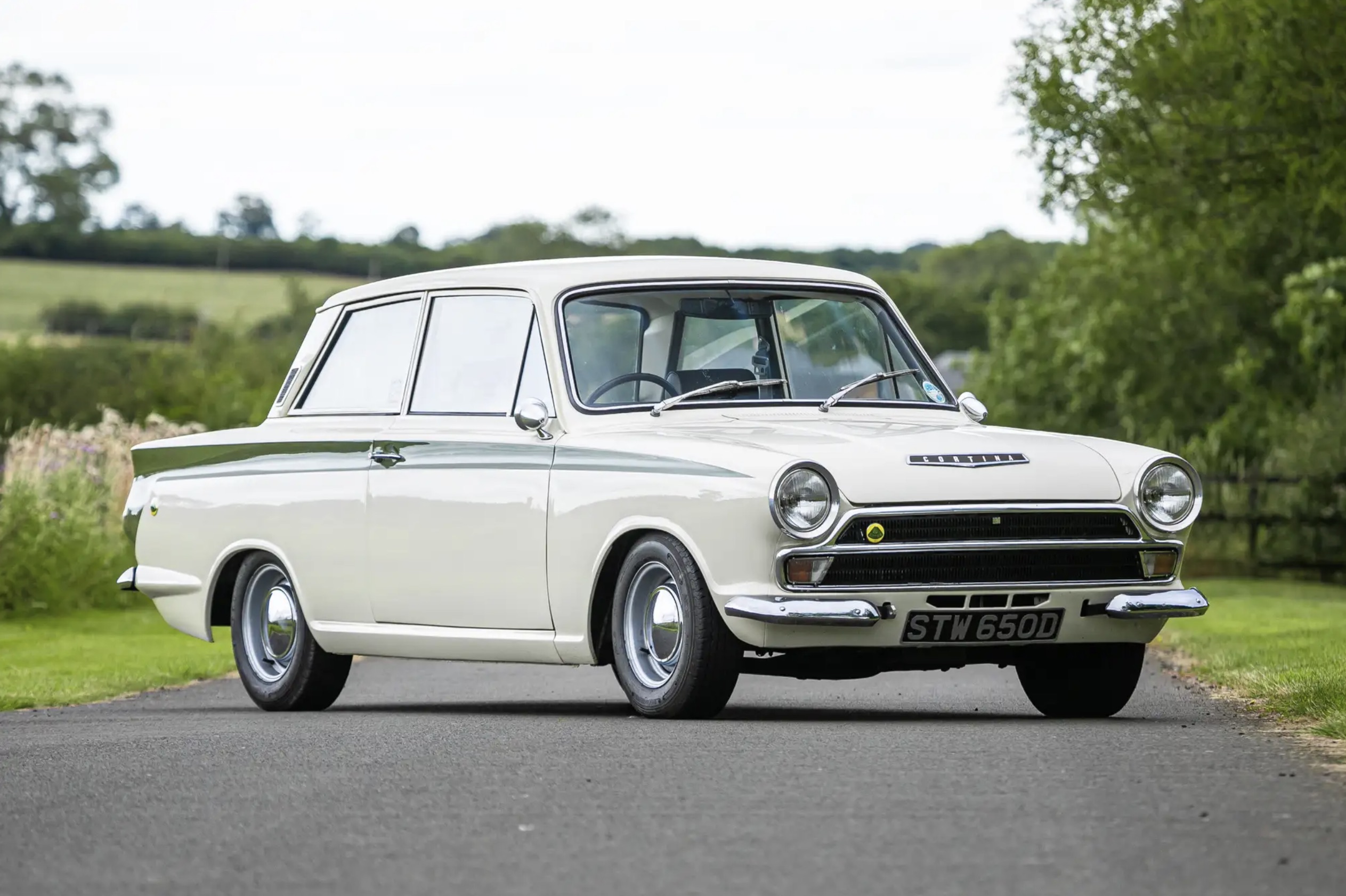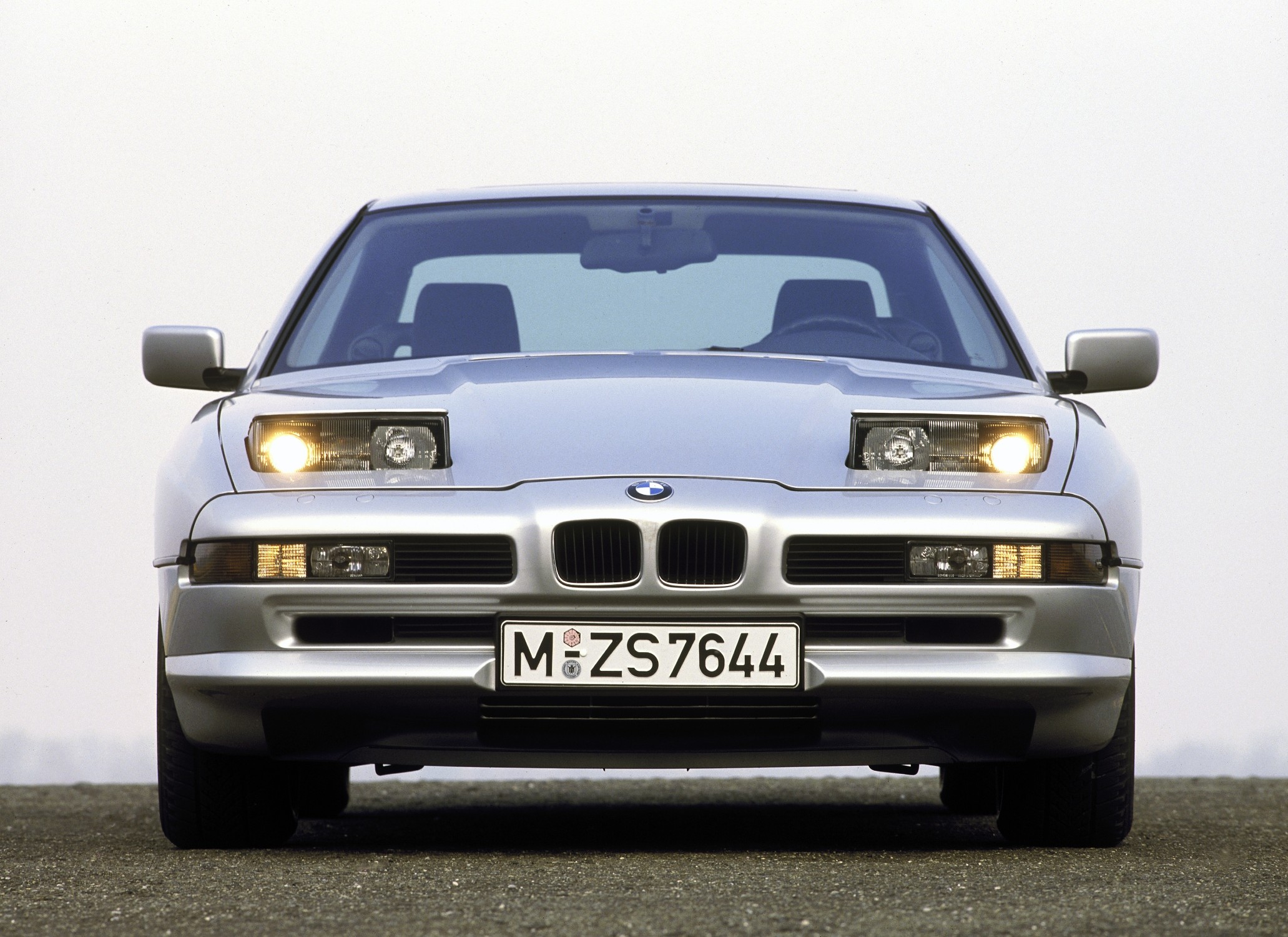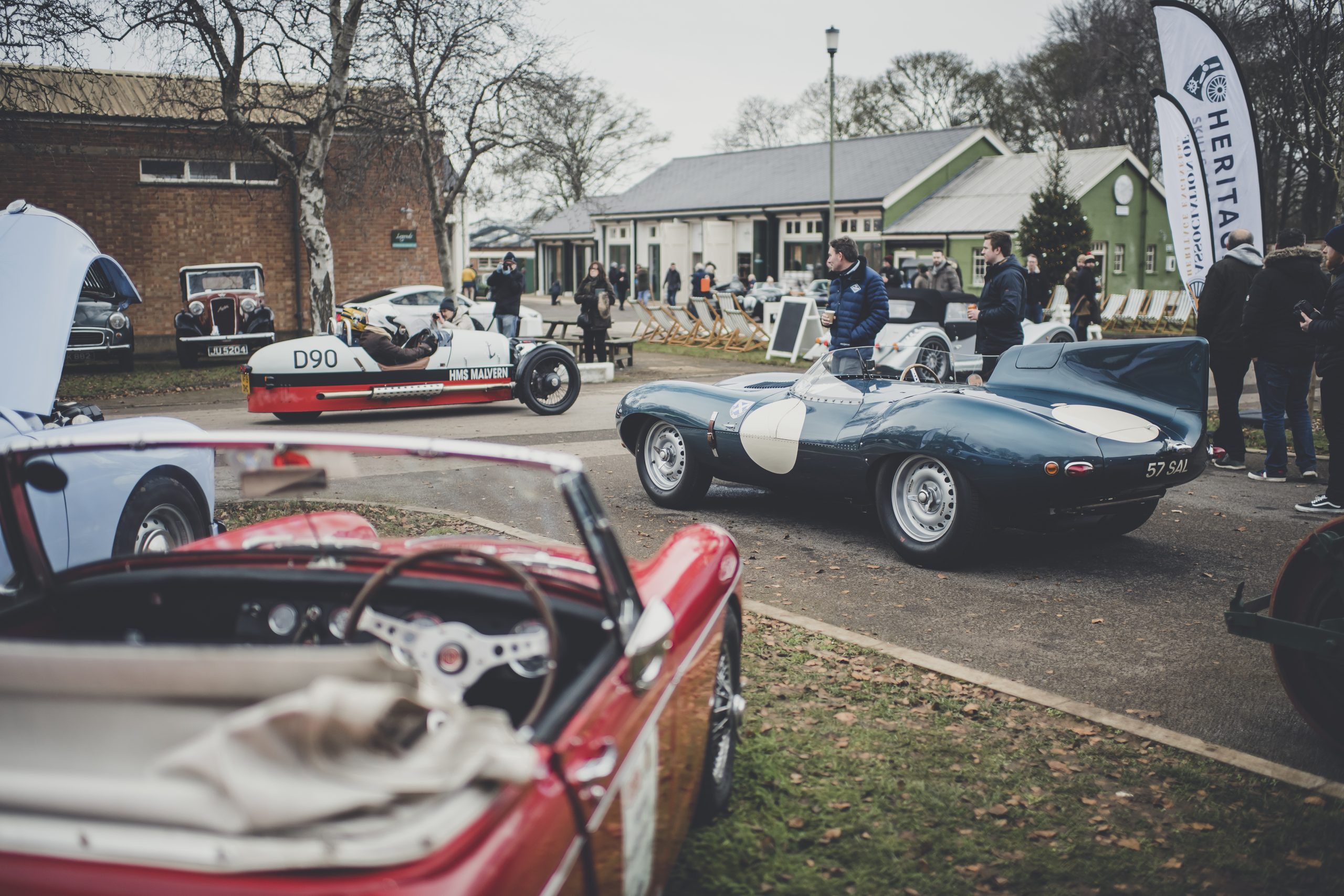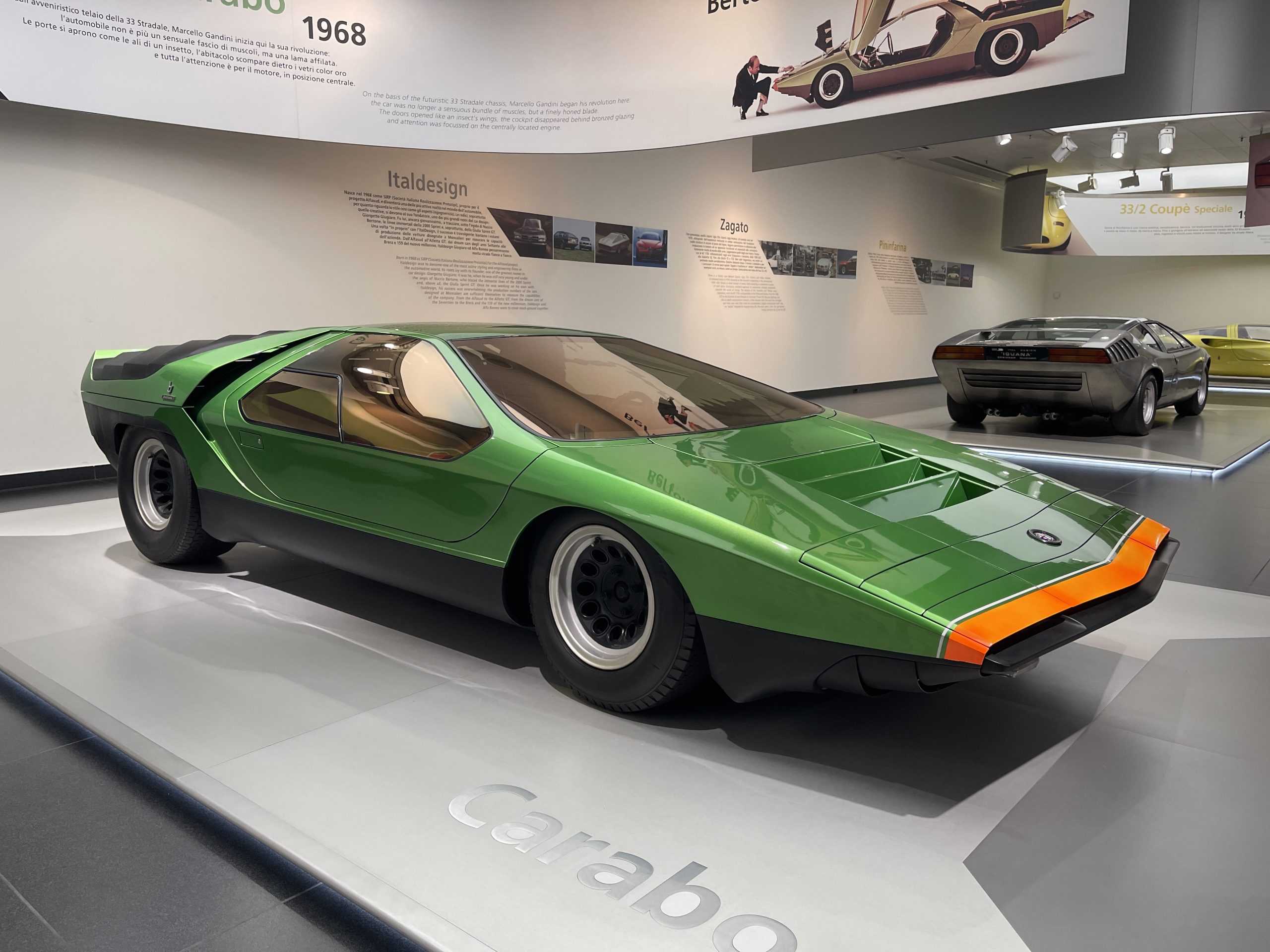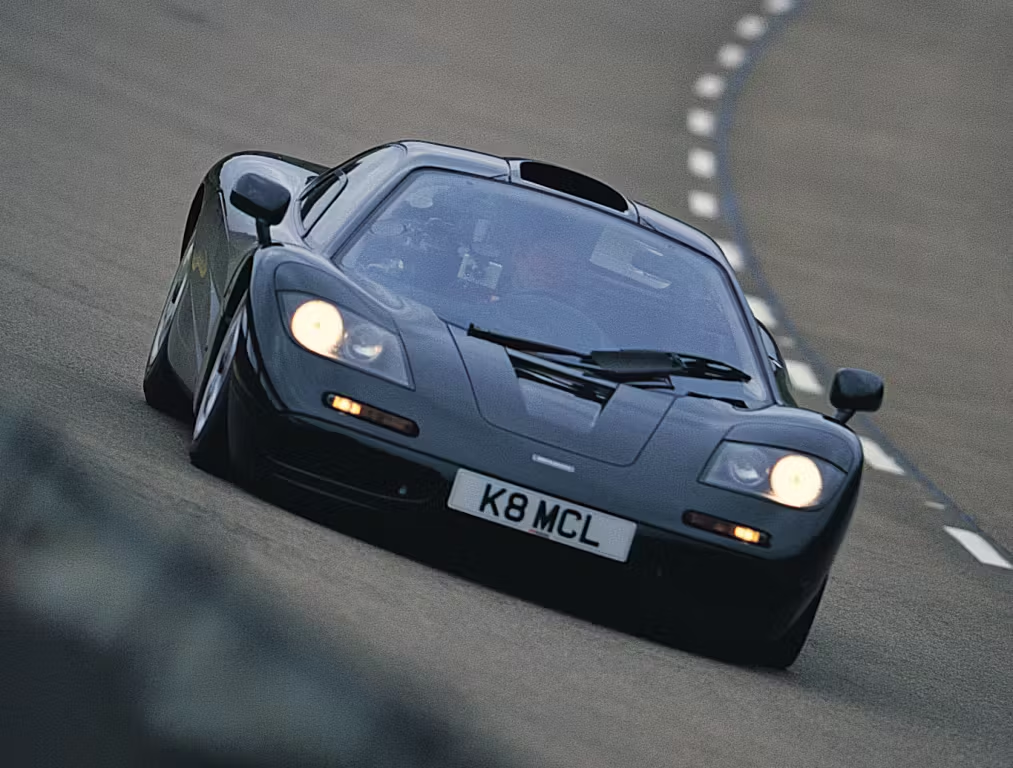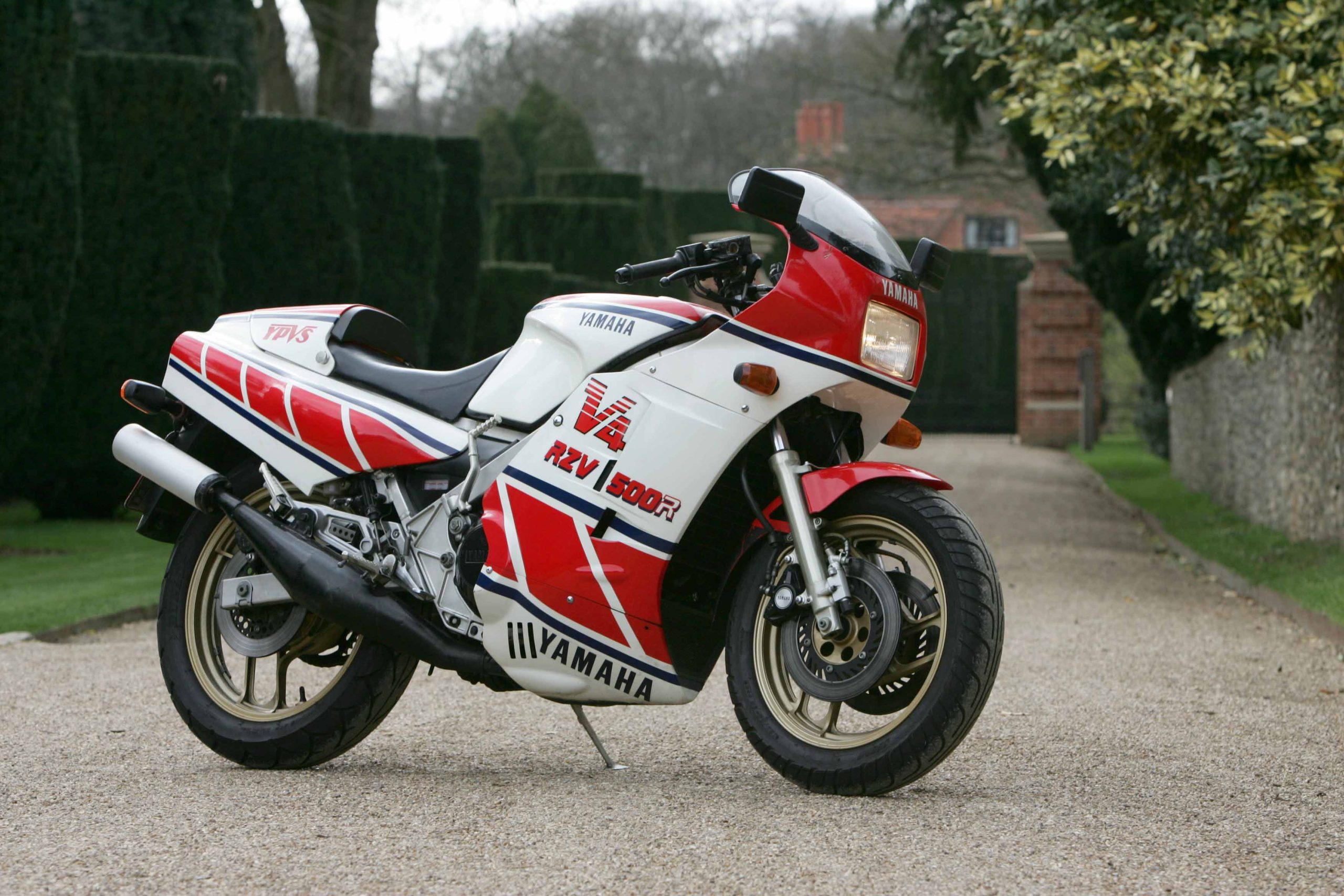During 20 years of production that began in 1962, Ford sold more than four million Cortinas worldwide, with sales in the U.K. alone accounting for 63 percent of the total. Over five model generations, they came as two-door saloons, four-door saloons, and five-door estates, and by the time the last car rolled off the line in 1982, the Cortina was every bit the people’s car to English citizenry as the Beetle was to German volks.
By and large, Cortinas were staid, simple, no-frills machines for family hauling and A-to-B commutes, and the Mk I cars, built through 1966, came equipped with rather mundane 1.2- and 1.5-litre Kent four-cylinder engines producing 49 and 60 horsepower, respectively. Their styling, while not exotic by any measure, was elegant, with an upright cabin, a big greenhouse, and a long, thin scallop near the beltline that led to, arguably, the best cheap-car taillights of all time.



Early in Mk I production, Ford PR whiz Walter Hayes convinced Lotus boss Colin Chapman to stuff the Elan’s 105bhp 1.6-litre twin-cam four and close-ratio four-speed gearbox into a thousand two-door Cortinas to homologate them for Group 2 racing. The steel bonnet, doors, and boot lid were replaced with aluminium. The stock suspension was tweaked for handling with shorter front struts and forged control arms, while the rear leaf springs were replaced with coil springs and dampers. The standard car’s front brakes were upgraded with servo-assisted Girling discs. The entire recipe was transformative.
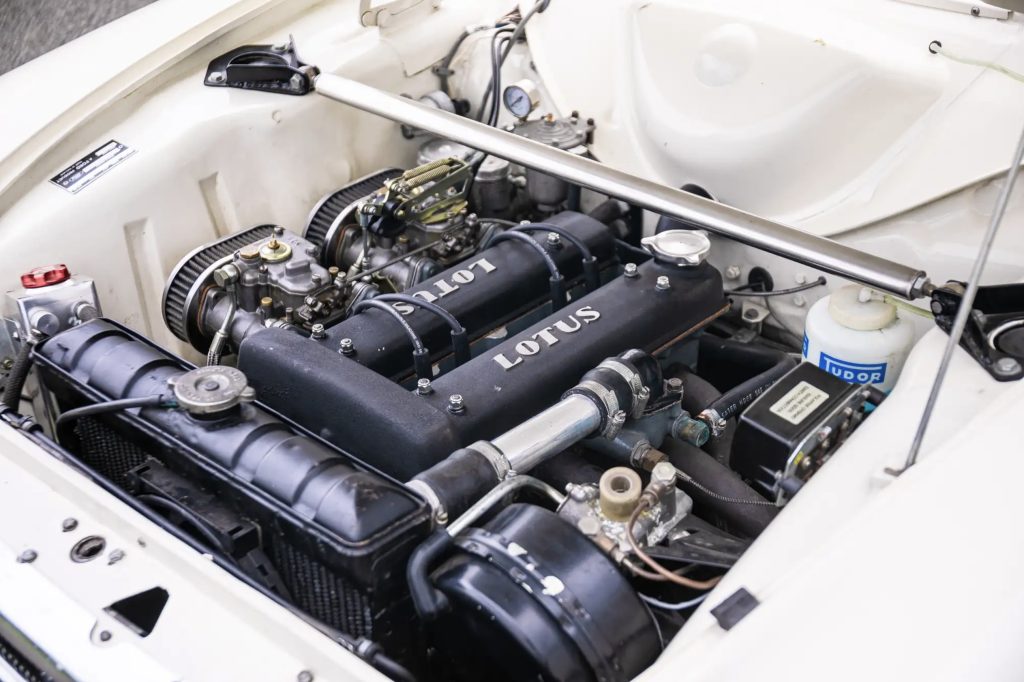
Nearly all of the Ford Lotus Cortinas came in Ermine White with a sliver of Sherwood Green to punctuate the side scallop. A small Lotus badge adorned both rear wings and the right side of the grille. When they hit the racetracks of the world in 1963, they were an instant sensation and quickly earned the “tin top Seven” moniker. Mk I production eventually totalled 3300 cars, before the Cortina Mk II, and its Lotus-tuned counterpart, debuted for 1967.
In period, Mk Is were piloted by a who’s who of racing greats; most successful was two-time Formula 1 World Champion Jim Clark, who won every race he entered in a Cortina and easily claimed the 1964 British Saloon Car Championship.
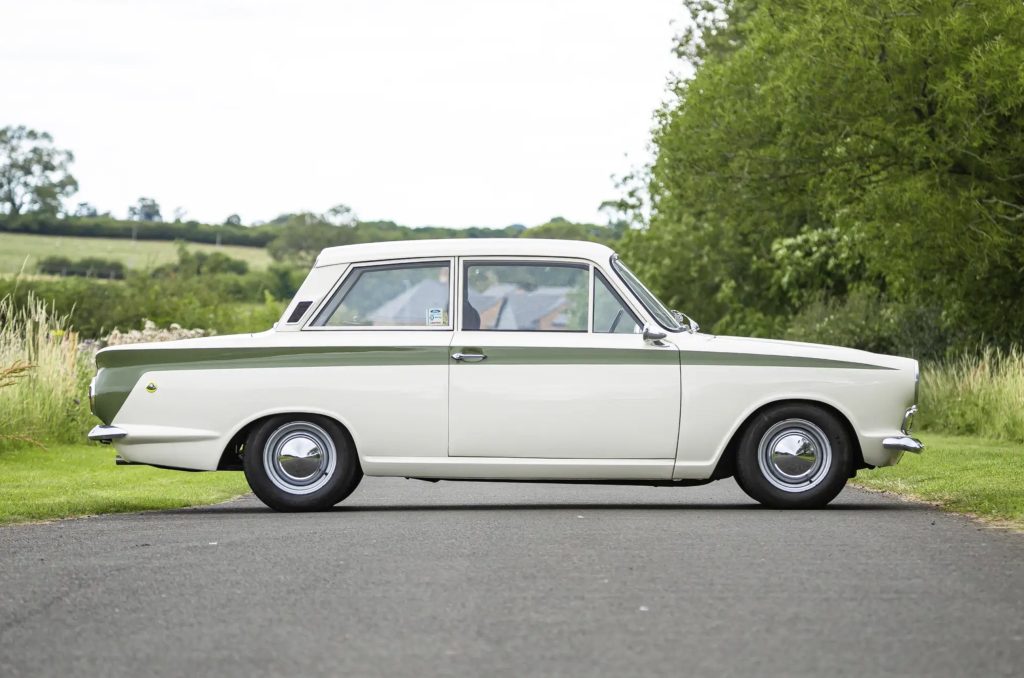
The 1966 Ford Lotus Cortina shown here sold last week for £63,000 at Iconic Auctioneers’ Silverstone Festival sale.
The listing states it received a “no expense spared” restoration by a marque specialist in the late 1990s, which included the installation of a new floor, new chassis rails, new inner and outer front wings, with new metal added to the bodywork where needed. The engine was rebuilt to original spec and new carburettors were fitted, the upholstery and carpeting were replaced, and all brightwork was renewed.
Though it doesn’t have any racing history, it did appear in a few small magazine stories, and there is some fuzzy language stating it originally may have been registered by Ford for possible use as a press or management vehicle. “Might be worth exploring and the research would be fun,” says the auction listing. Or not.
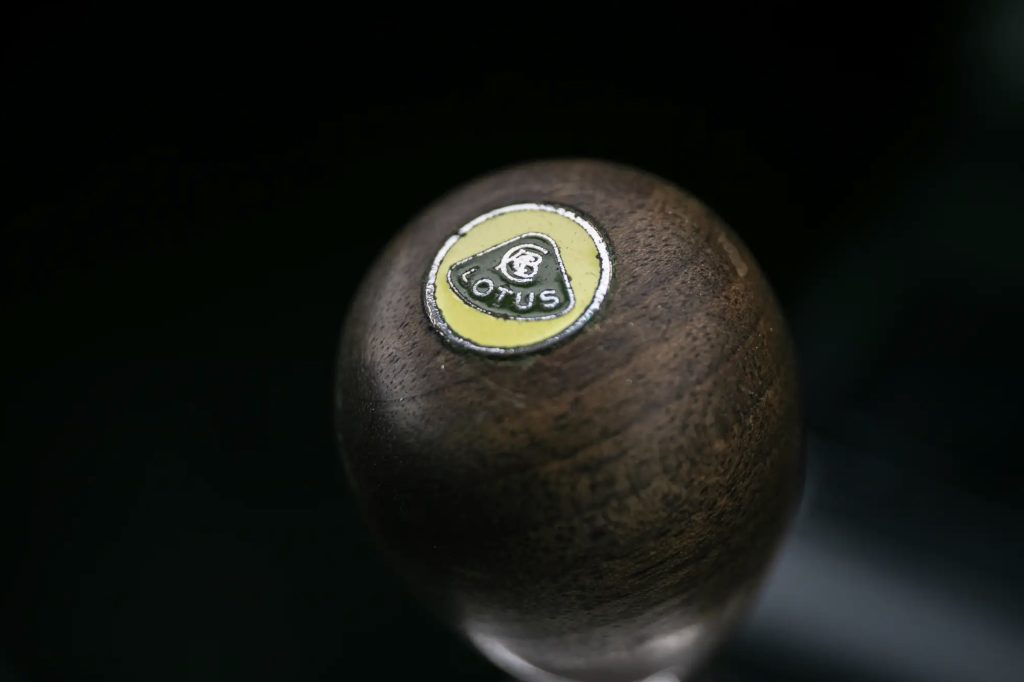
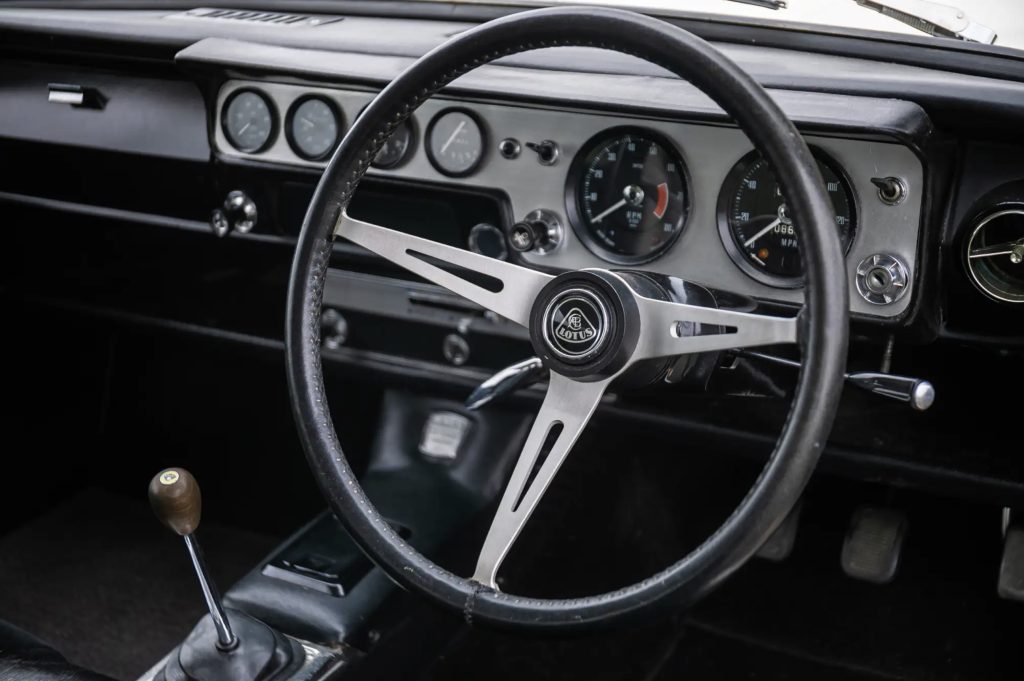
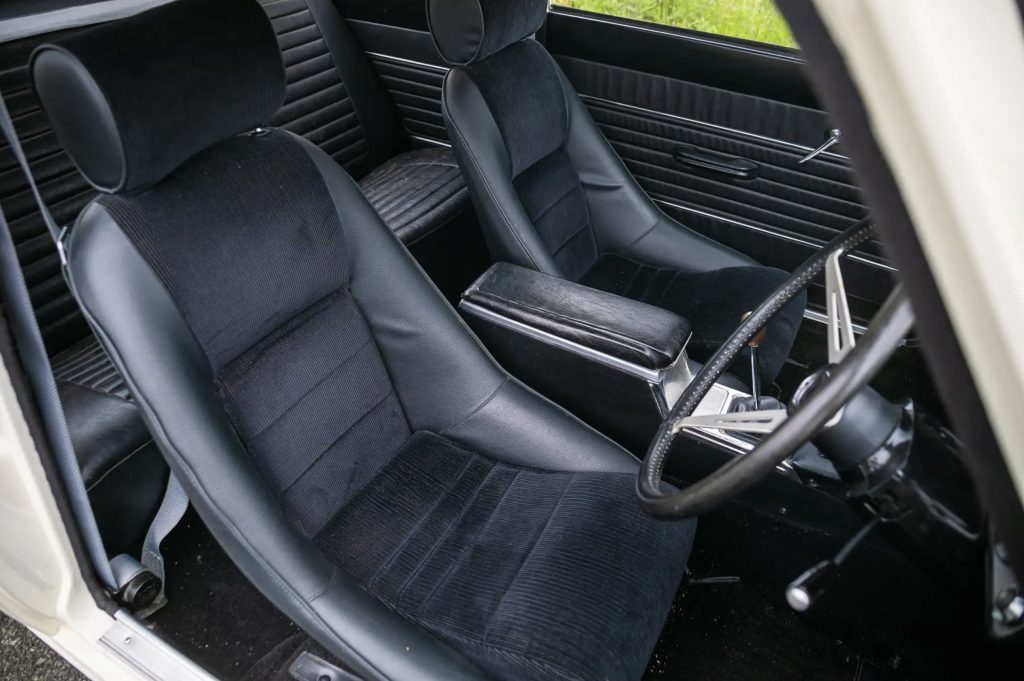
While the car’s details may not be concrete, there’s no disputing the restoration has held up splendidly. The photos all show a Cortina with zero rust, great paint with only minor blemishes, mostly even panel gaps, shiny chrome, and healthy-looking rubber bits. The engine and bay are clean, as is the black interior.
Understandably, these cars are far more common on the other side of the Atlantic, though so many succumbed to rot that they don’t show up at auction all that often anywhere. Our database shows 65 sales of Mk I and Mk II Lotus Cortinas going back 15 years, with a high sale of £180K in 2013 for the ex-Alan Mann Racing Mk I piloted by Sir John Whitmore to the European Touring Car Championship. More down to earth, your average ordinary Mk I examples in #3 (good) condition tend to hover in the £25,000–£35,000 range.
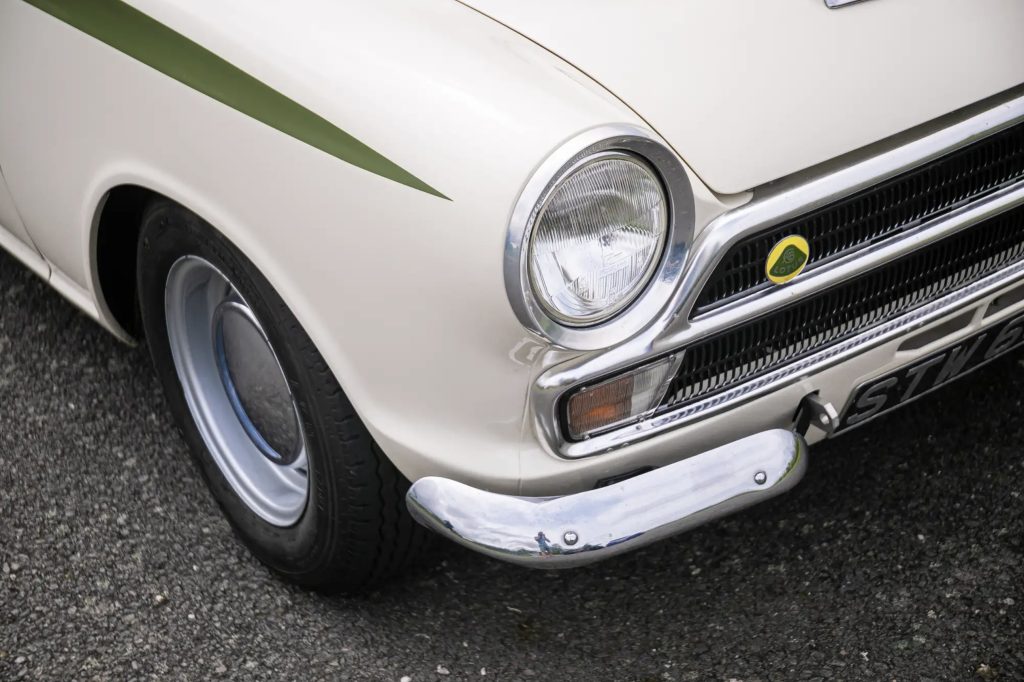
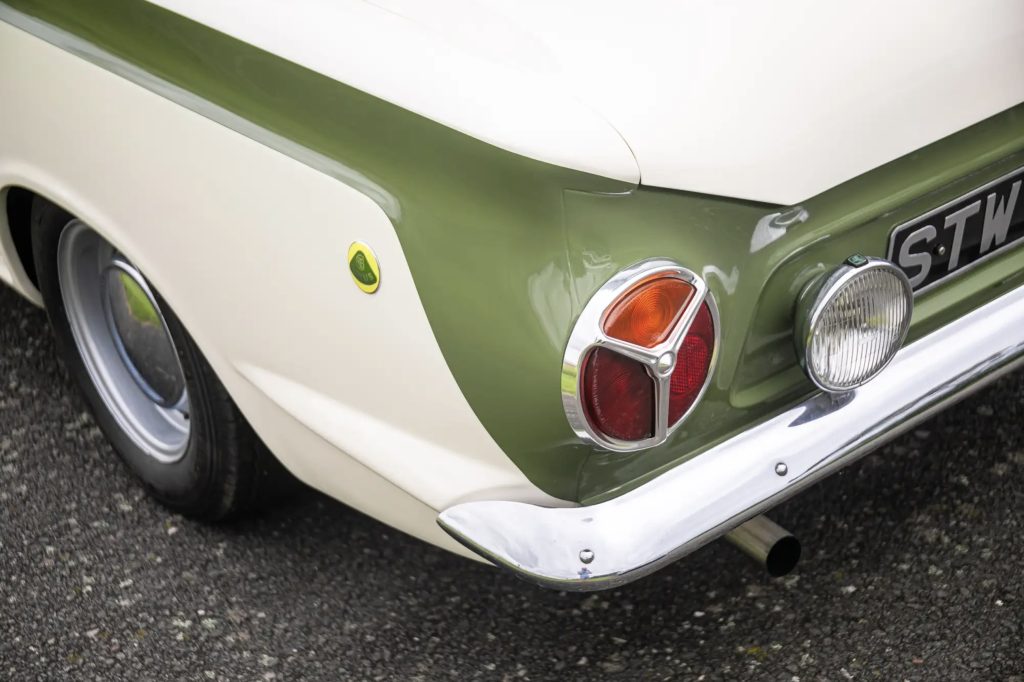
Given the age of the restoration and the obvious but minor flaws inside and out, this car falls into that same #3 category. That it brought strong #2 money is perhaps a testament to just how well that refurb was executed and how well it has held up, coupled with the rarity of these cars at auction. Someone jumped at the chance to own a well-sorted, highly tossable little factory hot rod, and who could blame them? If it drives as well as it looks, the new owner is in for a real treat.
